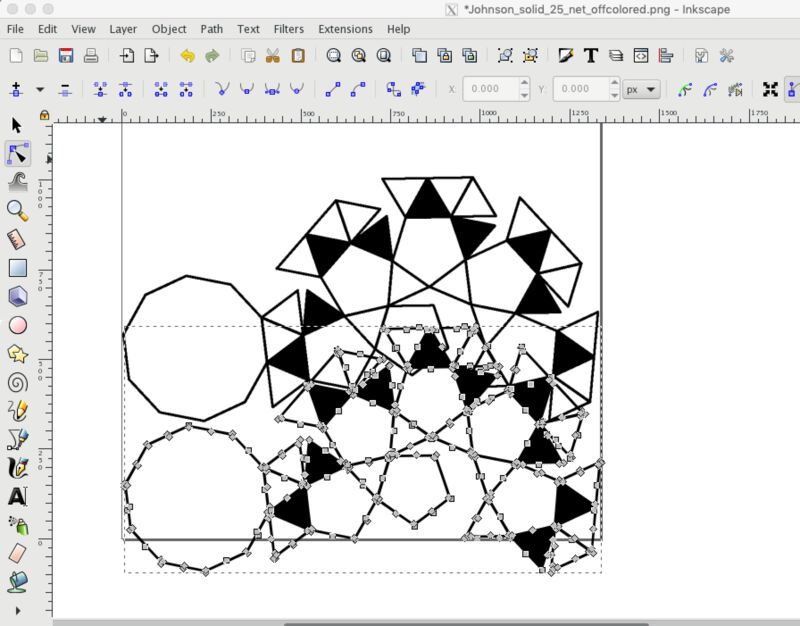
Some of its properties can be separately edited from the initial object, but not all.
Clone: a new object that has the exact same properties as the object cloned. One can draw on one, draw on another, and move them around separately without affecting each other. Imagine multiple pieces of transparent glass stacked on top of one another. Layer: one vertical slice of an entire image. Individual elements can be edited by double-clicking, holding Ctrl and clicking, or ungrouping. Group: a collection of objects that stay together. Can be modified and bent for many effects. Text: readable symbols that stand for ideas. Each color that you assign to a gradient has a handle associated to it, the 'gradient stop'. Consists of two or more colors which have the intermediary shades colored by the computer. Radial and Linear gradients are available. Gradient: a type of fill consisting of multiple colors. Pattern: a type of fill consisting of a repeating tiling of objects. It can be a color, a pattern, a gradient or even unset (no defined, allowing clones of the object to receive their own fill). Fill: is an optional attribute for objects and their strokes. Available by using either extensions (Pattern along Path, Scatter) or Live Path Effects (Pattern along Path). Pattern along Path: the representation of a stroke as a sequence of arbitrary objects positioned along the path. This is available from the Live Path Effects dialog. PowerStroke: the dependency of the stroke width on distance along the stroke. If the stroke is present, it can be converted to path by Convert Stroke to Path command. Not the same as path a path may or may not have a stroke. Stroke: a visible outline of a shape or path. Internally this is called a Knot, but this is a deprecated term in user documentation. The things that you drag on canvas to set the placement, direction, and size of a gradient or pattern (gradient handles, pattern handles). Points on a shape that can be dragged by node tool to edit the shape, displayed as small white diamonds (shape handles). The arrows around the selected object in selector (scale handles, rotation handles). One of two points around a node, displayed (for selected nodes) as a circle connected with its node by a line (node handles). Node can have one or two handles too - displayed as circles connected to node. If you use Node tool, then it is displayed as gray or blue (if selected) rectangle on a path.  Node: point of a path that you can manipulate with. A live shape can be converted to path by Convert to Path command.
Node: point of a path that you can manipulate with. A live shape can be converted to path by Convert to Path command.  (Live) Shape: an object that does not display nodes but may have controls. For example a line created using the Freehand tool. Path: object, with nodes, but without handles. May be a path, a shape, a text object, a group, etc. Object: an independent editable thing on the canvas. A good reference for SVG vocabulary is the SVG standard website (hosted by the W3C) itself.
(Live) Shape: an object that does not display nodes but may have controls. For example a line created using the Freehand tool. Path: object, with nodes, but without handles. May be a path, a shape, a text object, a group, etc. Object: an independent editable thing on the canvas. A good reference for SVG vocabulary is the SVG standard website (hosted by the W3C) itself.








